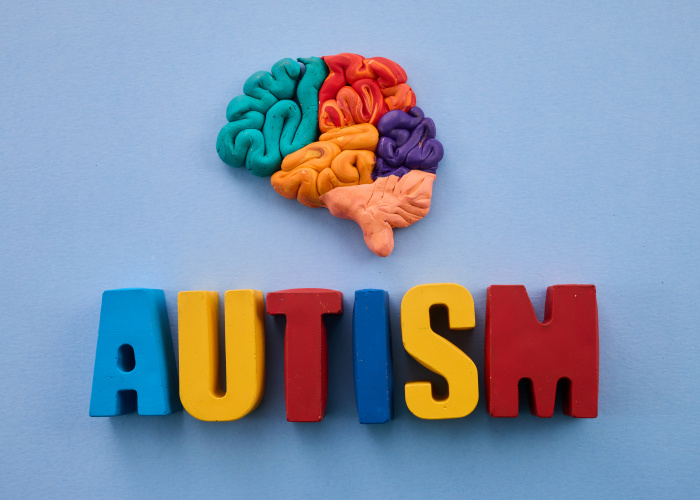It's crucial to know that students with autism and ADHD need special study strategies. Autism…

Exploring the Reasons for Repetitive Behavior in Autism
Repetitive behaviors ranging from simple movements to complex routines are a hallmark of autism spectrum disorder, forming one of the essential criteria for its diagnosis. These actions, though puzzling to many, are an intrinsic part of the daily lives of individuals with autism. Understanding the reasons for repetitive behavior in autism not only shines a light on the condition itself but also highlights the diverse experiences of those within the autism community.
Initially observed by the pioneering researchers Leo Kanner and Hans Asperger, and recognized for their potent impact by subsequent studies, these behaviors cover a broad spectrum. Grasping the underlying autism repetitive behavior causes can bridge gaps in awareness and foster empathy. Whether as a means of sensory processing, stress reduction, or simply for pleasure, the significance of these behaviors cannot be overstated for those they affect.
For caregivers, educators, and healthcare professionals seeking understanding repetitive behaviors in autism, it’s crucial to recognize the roles these patterns play. They’re not merely quirks to be quelled but are deeply woven into the fabric of autistic life commands of an inner rhythm that orchestrates a semblance of balance in a world that often feels unpredictable and overwhelming.

Understanding Repetitive Behaviors in Autism
Within the autism spectrum, repetitive behavior patterns in autism manifest in ways that are as varied and individualized as the people they affect. To truly grasp the function of repetitive behaviors in autism, it’s important to explore the varied forms these behaviors can take and the profound impact they have on those who demonstrate them. Diving deep into the nature of these behaviors not only helps in managing repetitive behaviors in autistic individuals but also in tailoring repetitive behavior interventions for autism that are compassionate and effective.
Analysing ‘Lower-Order’ and ‘Higher-Order’ Repetitive Behaviors
Professionals categorize the repetitive behaviors in individuals with autism into two main groups: ‘lower-order’ and ‘higher-order’. Simple physical motions like hand-flapping and vocalizations such as echolalia fall into the ‘lower-order’ category. ‘Higher-order’ behaviors encompass more complex patterns such as adherence to routines and focused interests, shedding light on the intricate nature of autism repetitive behavior causes.
The Relationship Between Repetitive Behaviors and Autism Diagnosis Criteria
The Diagnostic and Statistical Manual of Mental Disorders (DSM-5) outlines specific diagnostic criteria that tie closely to the manifestation of repetitive behaviors. Two key markers include an unusual intensity or focus, and significant upset when these behaviors are disrupted. These detailed criteria help in understanding not just the presence of these behaviors but also their profound relevance to the lived experiences of those on the autism spectrum.
Developmental Significance of Repetitive Behaviors in Early Childhood
As part of typical development, repetitive movements play a crucial role in helping young children learn to coordinate their bodies and process sensory information. However, these behaviors often appear more intense and lasting in autistic children, suggesting a developmental significance that can assist in early identification and understanding of autism.
Through ongoing research and dialogue with the autism community, there is a growing recognition that these behaviors serve multi-faceted functions, from sensory processing to communication. By acknowledging the depth of repetitive behaviors, clinicians and caregivers can approach managing repetitive behaviors in autistic individuals with greater insight and sensitivity.
Autism Repetitive Behavior Causes: Theories and Insights
Delving into the causes behind repetitive behaviors in autism uncovers a complex interplay of neurological, sensory, and environmental factors. Understanding repetitive behaviors in autism is not merely about acknowledging their occurrence but also about appreciating their profound meaning for those affected. Autistic individuals often engage in these behaviors to meet an innate need, highlighting the necessity of nuanced repetitive behavior interventions for autism. Let’s explore different facets and emerging theories that offer insights into these behaviors.
The Importance of ‘Stimming’ in Autism
For many autistic individuals, ‘stimming’ a self-soothing mechanism plays a key role in managing emotions and sensory input. Self-stimulatory behaviors, which can range from hand-flapping to humming, help many autistic people cope with an overwhelming environment. Such practices also grant a sense of relief and pleasure, demonstrating why autistic people engage in repetitive behavior. While ‘stimming’ has been subject to debate, its significance in providing comfort and structure to autistic individuals is undeniable, emphasizing the importance of accommodating such practices.
Functional Perspectives: Communication and Sensory Regulation
When uncovering reasons for repetitive behavior in autism, it becomes evident that these behaviors extend beyond mere habit. They often serve important functions like facilitating non-verbal communication about emotional states or helping to regulate sensory experiences. Repetitive behaviors can signal to caregivers and peers when an autistic person is stressed, excited, or in need of support, presenting an alternative channel for expressing emotions and states that might otherwise be challenging to convey.
Investigating Neurological and Environmental Triggers
Research endeavors continue to investigate the multifaceted triggers of repetitive behaviors in individuals with autism, delving into both neurological and environmental aspects. Some theories suggest that such behaviors are ways to manage sensory overload or are a reflection of neurobiological differences. As our understanding grows, tailored interventions aim to respect the individual’s experience and provide support that enhances their ability to navigate daily challenges without suppressing their inherent coping mechanisms.
Conclusion
The kaleidoscope of behaviors found within the autism spectrum, particularly those of a repetitive nature, are as varied as they are vital to the individuals expressing them. These patterns can serve as mechanisms for self-regulation, communication, and sensory processing, underscoring the critical role they play in the daily lives of autistic individuals. Appreciating the intrinsic functions of these behaviors is pivotal in managing repetitive behaviors in autistic individuals. This understanding sheds light on when, how, and even if intervention is appropriate, guiding us towards practices that are more inclusive and supportive.
As we refine our approach to repetitive behavior interventions for autism, the nuance becomes key. Intervention strategies must be custom-tailored, balancing the need to mitigate those behaviors that hinder an autistic individual’s ability to function with the recognition of behaviors which foster their sense of well-being and control. The ongoing evolution of research offers hope for advancements in distinguishing beneficial forms of repetition from those warranting gentle redirection. In working toward a society that is more adaptive and accepting, our focus remains on creating environments that respect and accommodate the varying needs and expressions within the autism community.
In summary, a nuanced comprehension of the diverse purposes repetitive behaviors fulfill can inform effective support systems for autistic individuals. It is within this knowledge-based framework that we can embrace the full spectrum of autism, appreciating each individual’s unique way of experiencing the world. Through education and sensitivity, we can advance toward a future where managing these behaviors aligns with fostering a quality of life rooted in understanding, patience, and acceptance.
FAQs
Why do autistic people engage in repetitive behaviors?
Autistic individuals may engage in repetitive behaviors for various reasons, such as reducing anxiety, regulating sensory input, aiding in concentration, improving body awareness, and expressing emotions non-verbally.
What are ‘lower-order’ and ‘higher-order’ repetitive behaviors?
‘Lower-order’ repetitive behaviors typically involve simple motor movements or sounds, like hand-flapping or rocking. ‘Higher-order’ repetitive behaviors are more complex and involve rigid routines or deep focus on specific interests or activities.
How are repetitive behaviors linked to autism diagnosis criteria?
Repetitive behaviors are a defining feature of autism according to the DSM-5. They become part of the diagnostic criteria when they are excessive in intensity, disrupt everyday functioning, or cause significant distress when changed.
What is the developmental significance of repetitive behaviors in early childhood?
In early childhood, repetitive behaviors assist in sensory integration and the coordination of voluntary movements. While these behaviors are common in all young children, they can be more pronounced and persistent in autistic children, sometimes signaling the presence of autism.
What is ‘stimming,’ and why is it important in autism?
‘Stimming,’ short for self-stimulatory behavior, is a term used to describe repetitive behaviors that can help autistic individuals manage sensory overload, cope with emotions, or focus attention. Despite being sometimes criticized, ‘stimming’ is often a crucial part of how autistic people experience and interact with the world.
How do repetitive behaviors function in terms of communication and sensory regulation for autistic individuals?
Repetitive behaviors can serve as a non-verbal form of communication, indicating emotional states or needs. They also play a role in sensory regulation by helping individuals manage sensory sensitivity or under-responsiveness.
What are some theories behind what causes repetitive behaviors in individuals with autism?
Theories suggest that repetitive behaviors may be a coping mechanism for sensory overload, reflect a disorganized nervous system, or represent an attempt to impose order and predictability on the environment. However, the exact causes are not fully understood and may vary from person to person.
Are there any interventions for managing repetitive behaviors in autistic individuals?
Yes, there are various interventions, from behavioral strategies to sensory integration therapies, which can help manage repetitive behaviors, especially when they interfere with learning, social interactions, or pose a risk of self-harm.



This Post Has 0 Comments